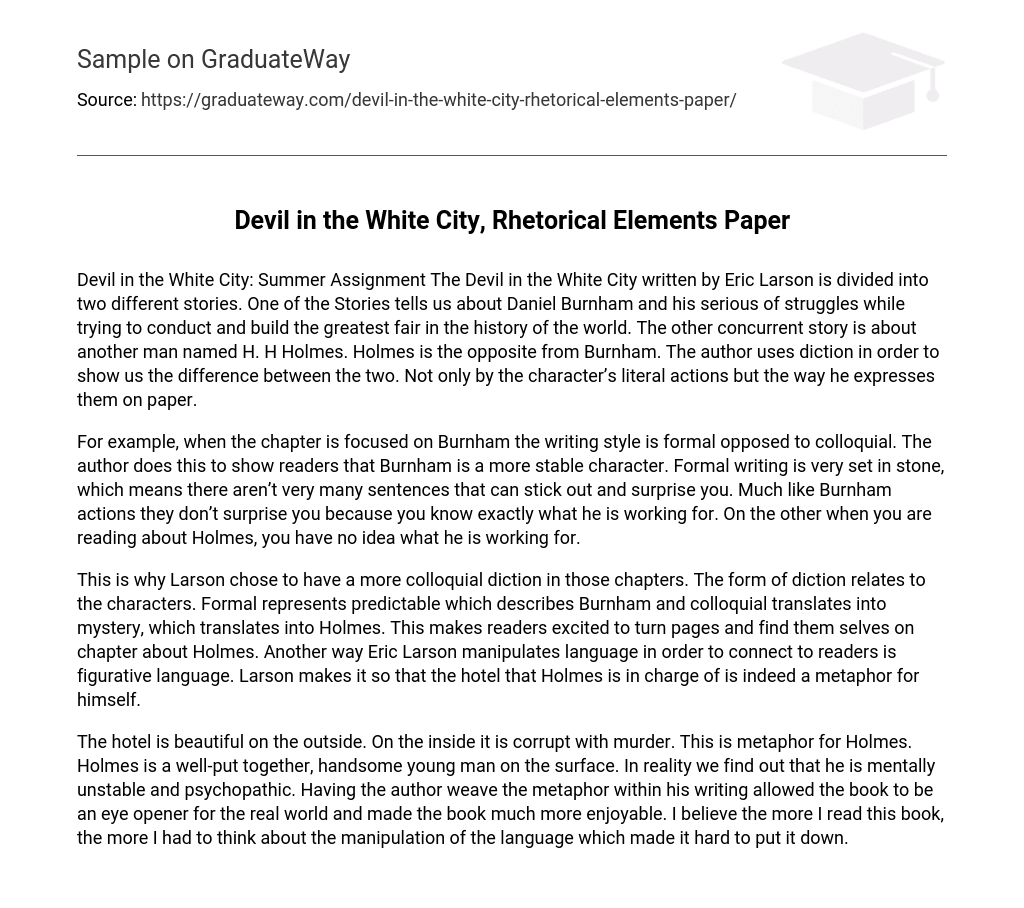Devil in the White City: Summer Assignment is a book written by Eric Larson. It is composed of two distinct narratives. The first narrative focuses on the challenges faced by Daniel Burnham while attempting to construct and organize the most extraordinary fair ever witnessed in history. Simultaneously, the second narrative revolves around H. H Holmes, presenting an entirely contrasting persona when compared to Burnham. Larson effectively employs linguistic choices to underscore the disparities between these two characters, not just through their actions but also through his eloquent portrayal of their deeds.
The author uses a formal writing style to portray Burnham as a stable character. Formal writing is rigid and predictable, just like Burnham’s actions. In contrast, when reading about Holmes, his objectives remain uncertain.
Larson’s choice to use a more informal language in certain chapters serves a purpose – it reflects the different characters. Formal diction is used to portray the predictable nature of Burnham, while colloquial language adds an element of mystery to Holmes. This creates anticipation for readers, making them eager to delve into chapters centered around Holmes. Additionally, Larson employs figurative language to establish a connection with readers. The hotel that Holmes manages becomes a metaphor for his own persona.
The hotel’s exterior is stunning, yet its interior harbors a dark secret of homicide. This acts as a comparison to Holmes himself. Despite his polished appearance and charm, we gradually unveil his unstable mental state and psychopathic inclinations. By integrating this metaphor into the author’s prose, it grants the novel an intellectually stimulating perspective on reality and amplifies its entertainment value. The further I delved into this book, the more I contemplated the artful use of language, making it arduous to put down.





